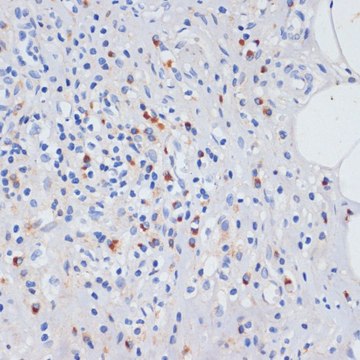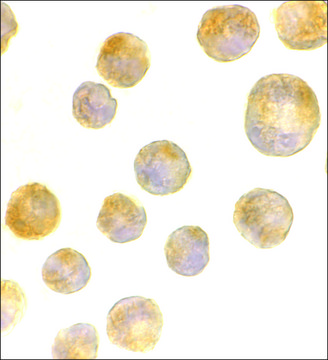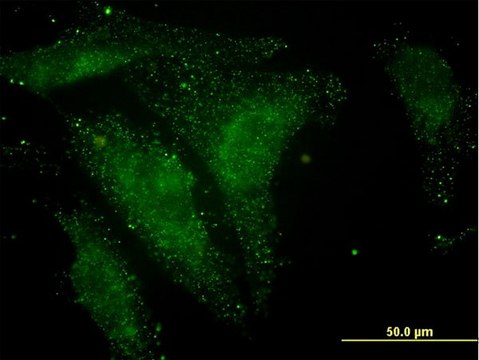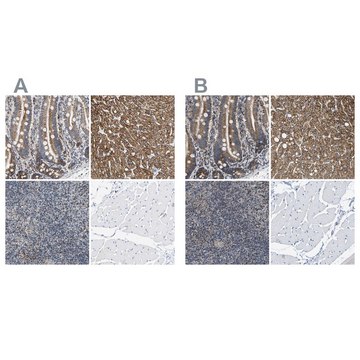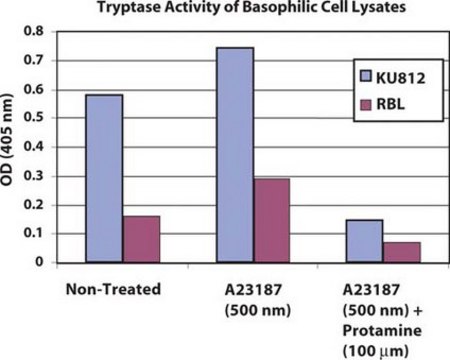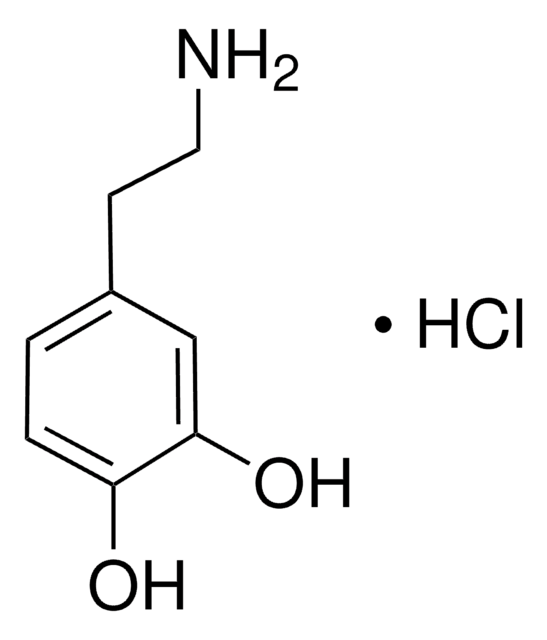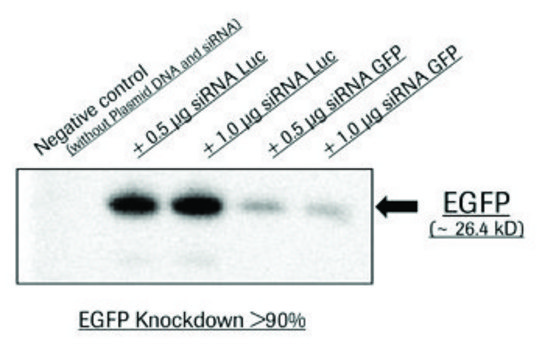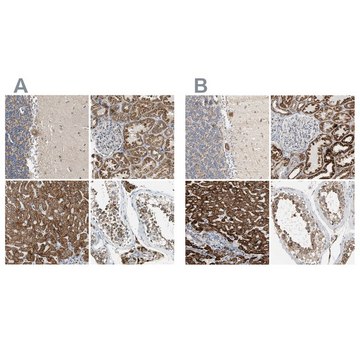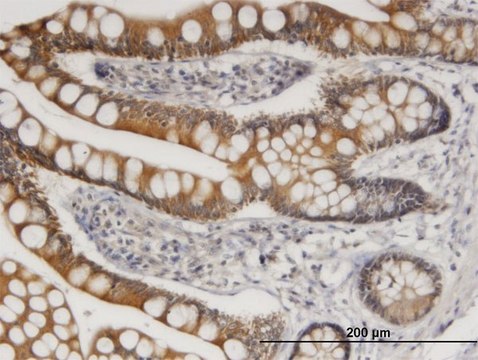SAB1300056
Anti-Mouse Tlr4 (N-term) antibody produced in rabbit
IgG fraction of antiserum, buffered aqueous solution
Synonym(s):
Anti-Toll-like receptor 4
Sign Into View Organizational & Contract Pricing
All Photos(1)
About This Item
UNSPSC Code:
12352203
NACRES:
NA.41
Recommended Products
biological source
rabbit
Quality Level
conjugate
unconjugated
antibody form
IgG fraction of antiserum
antibody product type
primary antibodies
clone
polyclonal
form
buffered aqueous solution
species reactivity
mouse
technique(s)
western blot: 1:1,000
shipped in
dry ice
storage temp.
−20°C
target post-translational modification
unmodified
General description
TLR4, a type I membrane protein that belongs to the Toll-like receptor family, cooperates with LY96 and CD14 to mediate the innate immune response to bacterial lipopolysaccharide (LPS). It acts via MyD88, TIRAP and TRAF6, leading to NF-kappa-B activation, cytokine secretion and the inflammatory response TLR4 Belongs to the lipopolysaccharide (LPS) receptor, a multi-protein complex containing at least CD14, LY96 and TLR. TLR4 binds to LY96 via the extracellular domain, and to MyD88 and TIRAP via their respective TIR domains. The protein contains 19 leucine-rich (LRR) repeats, and It is highly expressed in heart, spleen, lung and muscle. Lower levels are found in liver and kidney. Interstrain analyses reveal that TLR4 is a polymorphic protein and that the extracellular domain is far more variable than the cytoplasmic domain, which is variable at the C-terminal.
Immunogen
TLR4 (Q9QUK6, 29-65)
This antibody is generated from rabbits immunized with a KLH conjugated synthetic peptide selected from the N-terminal region of mouse TLR4.
This antibody is generated from rabbits immunized with a KLH conjugated synthetic peptide selected from the N-terminal region of mouse TLR4.
Physical form
Purified polyclonal antibody supplied in PBS with 0.09% (W/V) sodium azide.
Disclaimer
Unless otherwise stated in our catalog or other company documentation accompanying the product(s), our products are intended for research use only and are not to be used for any other purpose, which includes but is not limited to, unauthorized commercial uses, in vitro diagnostic uses, ex vivo or in vivo therapeutic uses or any type of consumption or application to humans or animals.
Not finding the right product?
Try our Product Selector Tool.
Storage Class Code
10 - Combustible liquids
WGK
nwg
Flash Point(F)
Not applicable
Flash Point(C)
Not applicable
Regulatory Information
常规特殊物品
Choose from one of the most recent versions:
Certificates of Analysis (COA)
Lot/Batch Number
Don't see the Right Version?
If you require a particular version, you can look up a specific certificate by the Lot or Batch number.
Already Own This Product?
Find documentation for the products that you have recently purchased in the Document Library.
Marian Jesabel Pérez-Rodríguez et al.
Journal of neuroinflammation, 17(1), 95-95 (2020-03-30)
Huntington's disease (HD) is caused by the expression of a mutated variant of Huntingtin (mHtt), which results in the complex pathology characterized by a defective function of the nervous system and altered inflammatory responses. While the neuronal effects of mHtt
Our team of scientists has experience in all areas of research including Life Science, Material Science, Chemical Synthesis, Chromatography, Analytical and many others.
Contact Technical Service